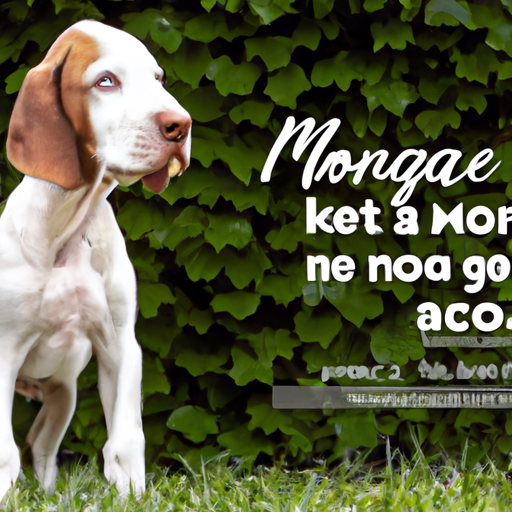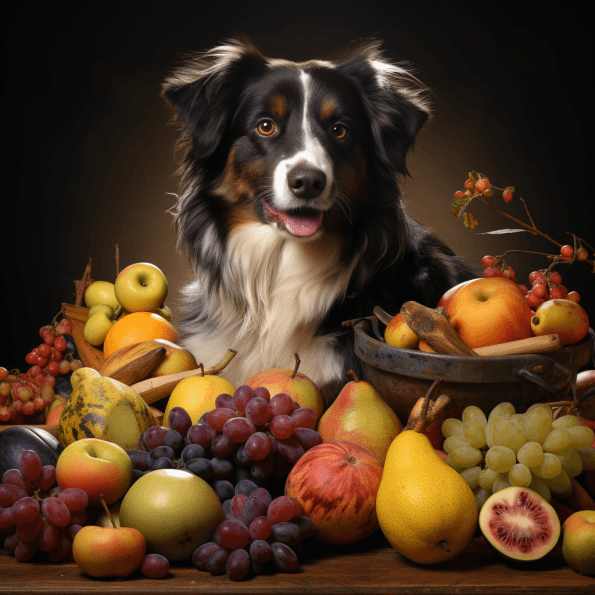American Hairless Terrier
You’re stepping into a world teeming with unconditional love, playful barks, and wagging tails that warmly welcome every newcomer. Let’s draw the curtain on a breed of dogs that has not only been a companion to owners across the USA, but also a sight of sheer delight for all dog lovers – the American Hairless Terrier. Cherished for their warmth and solidly constructed physique, these dogs possess a unique charm that sets them apart. Their defining feature? Naturally, it’s the hairless veneer that covers their lively bodies. Joined with their spirited demeanor, these dogs are recognized worldwide, have a rich past—and undoubtedly a promising future. Let’s get to know more about American Hairless Terrier, your potential fluffy or rather ‘not so fluffy’ companion.

History of the American Hairless Terrier
Origins of the breed
The American Hairless Terrier, as you might suspect from its name, originates from the United States. The breed’s roots trace back to the mid-1970s, meaning it’s fairly new in the grand scheme of the dog world. The breed stemmed from a mutation of the Rat Terrier, with the first hairless Rat Terrier, a female puppy named Josephine, born in Louisiana in 1972. The breeders, Edwin and Willie Scott, were intrigued by Josephine’s unique appearance and personality and decided to attempt breeding her.
Development in the United States
After Josephine matured, she was bred a few times, but it wasn’t until her third litter of pups that a second hairless appeared. Thereafter, through selective breeding and a fair bit of trial and error, the Scotts were able to produce more hairless puppies, thus laying the groundwork for the American Hairless Terrier breed. The Scotts worked over several years to solidify the breed, even crossing their terriers back with coated Rat Terriers to ensure a larger gene pool.
Recognition by kennel clubs
The American Hairless Terrier’s road to recognition has been a gradual one. Things started moving in 1981 when the Scotts founded the American Hairless Terrier Association (AHTA). The United Kennel Club (UKC) officially recognized the breed in 2004, and thereafter, the American Kennel Club (AKC) in 2016. It is now accepted by other international, national, and local canine organizations, further establishing its place within the dog-loving community.
Physical Characteristics of American Hairless Terrier
General appearance and size
As you’d expect, the first thing you notice about an American Hairless Terrier is its lack of fur. You can also spot one by the long, sleek body and pointy ears. They are Small in stature but fairly muscular. Adults typically weigh between 12 to 16 pounds and stand around 7 to 16 inches tall at the shoulder, putting them firmly in the “small dog” category.
Distinguishing features
Their most distinguishing feature is, without a doubt, their skin, which feels warm and a bit sticky to the touch. It is soft, smooth and covered with tiny whisker-like hairs that are almost invisible. Also unique are their ears, which are V-shaped and stand erect or tipped over on small dogs.
Variations in color patterns
American Hairless Terriers come in a wide variety of skin colors and patterns. You may find them in shades of pink, black, bronze, or gray. They can also have spotted patterns with any color. The pigmentation may change as the dog ages, either lightening or darkening, but these changes are entirely natural.
Temperament and Personality Traits
General behavior
The American Hairless Terrier mirrors its Rat Terrier heritage in many ways, being active, energetic, and curious. These dogs have a keen interest in their surroundings and love to explore their environment. They are intelligent, making them easy to train, and have a playful, friendly disposition.
Interaction with humans
Being very family-oriented, American Hairless Terriers form strong bonds with their human families. They are known for being good with children, and they thrive on the attention they receive from their loved ones. They enjoy being the center of attention, making them excellent for active families.
Relationship with other pets
While they can get along well with other dogs, they can be a bit aggressive or dominant towards animals of the same sex. Early and ongoing socialization can mitigate this issue. They can also be hesitant around larger dogs due to their size. Additionally, their Rat Terrier lineage makes them prone to chase smaller animals, so caution should be taken around rodents or birds.
Health and Lifespan of American Hairless Terrier
Common health concerns
American Hairless Terriers are generally healthy dogs, but there are a few specific health concerns for the breed. Skin issues are common, as their lack of coat leaves them vulnerable to the sun and other weather conditions. Dehydration, heat rashes, sunburns, and allergies are possible complications to monitor. They have been also known to have possible cases of hip dysplasia, patellar luxation, Legg–Calvé–Perthes syndrome, and heart problems.
Average lifespan
The lifespan is relatively long compared to other breeds, with most living between 14 and 16 years. Implementing proper care and diet, giving them regular exercise, and regular vet check-ups can increase their lifespan.
Importance of regular vet checks
Just like all dogs, American Hairless Terriers require regular vet visits to maintain optimal health. Their unique skin comes with a host of potential issues that require regular professional assessments. Regular check-ups will help prevent severe Health issues and keep your pup happy and healthy.

Grooming Needs of American Hairless Terrier
Bathing schedule
Oils build up on their skin due to the lack of hair, so regular baths are necessary. Weekly baths with a gentle, hypoallergenic shampoo are advisable to keep the skin clean.
Nail and dental care
Regular care of their nails and teeth is essential. Nails should be trimmed or filed down regularly to prevent overgrowth and splitting. Brushing their teeth should be done a few times a week to ensure good oral health and prevent tartar build-up.
Protection against the sun
Their skin, being exposed to the elements, requires special attention. They can get sunburned if exposed for too long, so if you bring your dog outside, it is necessary to use a pet-safe sunscreen or protective clothing.
Exercise and Diet Requirements
Recommended daily exercise
Being a terrier breed, these dogs need plenty of exercise to keep them happy and healthy. Around 30-60 minutes of active play per day is ideal. They make excellent jogging and walking partners but can also be satisfied with an energetic game of fetch.
Ideal diet composition
They require a diet rich in protein, healthy fats, and complex carbohydrates. Commercial dog food formulated for small or active breeds suits them well. It’s important to ensure they get adequate nutrition, but portion control is also important to prevent obesity.
Common dietary issues
While they don’t suffer from any known breed-specific dietary problems, they can be prone to common issues such as food allergies or sensitivities, obesity, and dental problems. A constant diet regimen and routine vet checks can mitigate these issues.
Training and Socialization
Proper training techniques
American Hairless Terriers are intelligent and eager to please, making them fairly easy to train. Positive reinforcement methods work best, along with consistent, daily training sessions. Early obedience training and puppy classes can be greatly beneficial.
Importance of early socialization
Early socialization is crucial for this breed. Exposure to different environments and all kinds of people, pets, and experiences helps them to be well-rounded adults. This can prevent them from developing territorial behavior or aggression towards the same-sex dogs.
Dealing with behavioral issues
If you find your dog displaying unwanted behaviors, do not panic; this is a smart breed, and behavioral issues mostly arise from boredom or inattention. Regular exercise, mental stimulation, and consistent training can correct these problems.
Special Needs of American Hairless Terrier
Care in cold weather
Their hairless skin makes them sensitive to cold weather. During winter or colder months, they might need sweaters, coats, or other dog-appropriate clothing to keep warm, especially during walks or while playing outside.
Dealing with skin allergies
Due to their exposed skin, these dogs may suffer from skin allergies, which can be caused by a variety of irritants like certain fabrics, grass, or cleaning products. It is essential to keep a vigilant eye on their skin condition and consult a vet if they start to show signs of discomfort or redness.
Use of clothing and sunscreen
In sunny weather, it’s not just about keeping cool – it’s important to protect their skin from harmful rays. Using a pet-friendly sunscreen or UV-rated clothing can help protect them from sunburn. Sunglasses may be useful too, as they can be prone to eye injuries due to lack of eyebrow protection.
Bringing Home an American Hairless Terrier
Finding reputable breeders
As with any breed, you want to make sure you’re dealing with a reputable breeder or rescue organization. Reputable breeders should provide health clearances for both of the puppy’s parents and be open to all your questions about personality, care, and health issues of the breed.
What to expect the first few days
A new environment can be overwhelming for a puppy, so it is normal for them to feel nervous the first few days. Provide a safe space, be patient, and shower them with love and care to help them adjust. Early training and socialization can, and should, start in this period.
Setting up a safe environment
Make sure your home is puppy-proof before bringing home an American Hairless Terrier. Create a space just for them with a warm bed (they can get cold easily due to lack of hair). Remove anything that could be harmful if chewed on or swallowed, and prepare a selection of safe toys for them to play with.
Advantages and Disadvantages of Owning an American Hairless Terrier
Advantages of the breed
American Hairless Terriers make great companion dogs. They are affectionate, loyal, and easy to train. Plus, with their lack of fur, you don’t have to worry about shedding on your furniture or allergy issues often associated with other breeds.
Potential challenges
However, it’s not all roses. Their lack of hair means they are sensitive to the elements, and they require special care, both in dressing for the weather and skincare. They have plenty of energy, requiring regular exercise, and their curious and intelligent nature means you need to keep them entertained.
Good fit for families and individuals
Overlooking the care requirements, American Hairless Terriers make wonderful pets for both families and individuals. Their friendly and outgoing nature makes them compatible with children and other pets. Their size and adaptability make them suitable for both apartments and houses with yards.







